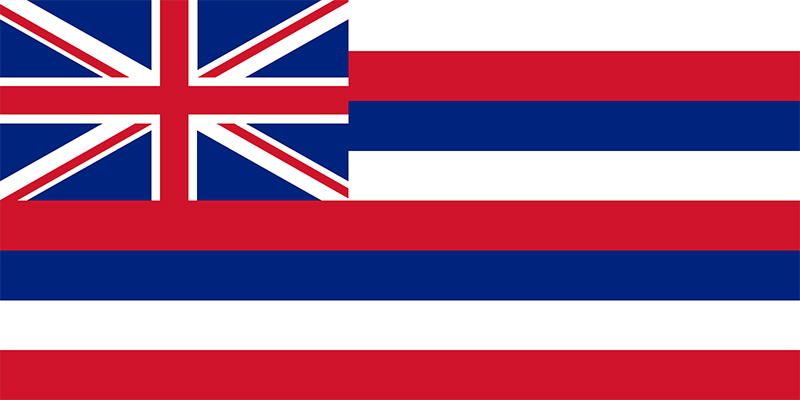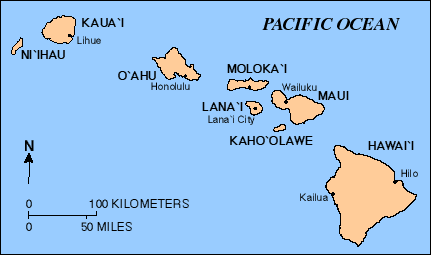Continuity of the Hawai’ian National Consciousness
TRANSCEND MEMBERS, 21 Aug 2023
Pōkā Laenui (Hayden F. Burgess) – TRANSCEND Media Service
`Ano `ai me ke aloha `e na hulu manu like `ole. O wau no `o Pōkā Laenui. He Hawai`i au.
(In the spirit of aloha, I great you, birds of many feathers. I am Pōkā Laenui. I am Hawai`i.)
21 Aug 2023 – A nation never dies until its national consciousness dies. It dies not by a conquest by another, by a loss of territory, by a takeover of a foreign power, by an overthrow of the government, by a change of its economic system, or by the colonization of a foreign people. It dies when people have lost consciousness of themselves.
Often that consciousness is enlivened and commemorated by the nation’s sacred times or events of its past, events which are pulled out from its ancient memory or its more recent times. For us in Hawai`i, we recall the great travels of our ancestors who journeyed the world from the Middle East across Asia, the vast Pacific, to the Americas and back to Hawai`i, or of the recent travels of Hokule`a [i]carrying modern explorers tracing ancient paths or finding new ones, breaking the bounds of our imaginations previously tethered by conditions which had stolen such knowledge and memories.
At times that consciousness may be commemorated by the nation’s sacred places, by the preservation of sites which represented significant events, the places of one’s national capitols, places of religious significance such as temples, mosques or churches, battlefields which may have altered the course of the nation, or of an island, a valley, a mountain, stream, or other significant places.
In addition to such sacred times and sacred places, a nation’s national consciousness is also contained in the stories and songs of the people, in the surface and the deep cultures of the people, in their ancient healing methods, in their dances, arts and crafts, and the many other droplets of such memories which is a constant reminder to the people of the nation.
There are several ways of seeing a place, predominantly through the eyes of a conquering population who only see a place as one for replacement, for economic tyranny, for possession, or through the eyes of visitors who come with no deep commitment but for merely curiosity into different life-patterns of inhabitants of the place. There is yet another perspective, from a people who continuous to carry a national consciousness of that nation and see the life pattern of that nation in strong and weakened times, as they try to adjust to the needs of that nation and to their personal needs and conditions, constantly negotiating for the survival of both their national existence and for themselves. In this confluence of peoples, there are also many “crossovers” beginning from a conquering population to visitors and to taking up the role of carrying on the national consciousness of the nation.
Ka Lā ho`iho`i EA, [ii]the day of the return of life of the nation” is one of those events which is yet another occasion which nurtures the national consciousness of Hawaii. It is a day to commemorate a historical event of great significance, of the return by the British nation of the stolen powers of government of Hawaii during the Kingdom of Hawaii in the reign of Kamehameha III (King Kauikeaouli)[iii] in 1843, but it also serves as an important reminder that we are now under the possession of another foreigner, the United States of America, who by sneak attack upon the shores of Hawaii in 1893, landed military forces here, and participated in an overthrow of the reigning constitutional monarch, Queen Lili`uokalani, and through various manipulations of the domestic laws of the United States, in cooperation with the puppet governments, the Provisional Government and the Republic of Hawaii, manipulated by that US government, has since declared that it is the lawful possessor of this Hawaiian nation, of all its territories, and of all its people! Ka Lā ho`iho`i EA serves as a day of rededication for Hawaiian Nationals who maintain their continued loyalty and allegiance to the Hawaiian nation, and continue to call upon the current colonizer to abide by the laws of nations and return the theft of Hawaiian sovereignty.
The Look in the Lady’s Eyes
Robert Beaumont’s song of Emma DeFries tells of the Light in the Lady’s Eyes. I had the wonderful opportunity to speak with her and look into her eyes as she told me of her history, especially of living at Lualualei where the U.S. military has established its ammunition depot and Naval radio station to communicate with submarines across the world, land over which she and other Hawaiian homesteaders had once lived with their precious and ancient Hawaiian memorabilia. One night, the U.S. military came to their homes and gave them notice that they needed to move out of that location within 1 week or all their possessions would be taken and destroyed, for the military was here to set up their military installations, their ammunition depot and communication station. A week passed, the military came, and all their possessions still left in their homes were destroyed.
She carried so much of the consciousness of our nation, assuring me that the sovereignty of Hawaii would return, especially during the generation she saw as she spoke with me. The lesson she taught me was, “watch those eyes”, eyes which had recorded so much of her history and memory, and now including me in her sight, shared with me what she had seen, and making me a part of that great history and memory from those eyes. In that way, she maintained the continuity of her and the nation’s consciousness, passing on to me and I to you.
As I have wondered through these valleys of the Leeward coast of O`ahu, I come cross a lot more “eyes of Hawaiian national consciousness.”
In 1978, having successfully defended the case of State v. Pulawa [iv]in which the State and the Federal Strike Force came into Hawaii to eliminate the Hawaiian-Samoan control over the Hawaiian underworld, we were able to thwart that takeover by answering the State’s charges of double murder-kidnapping by refusing to answer the charges and instead challenging, “who are you foreigners to judge our people by your foreign laws, we are not North Americans, we are Hawaiians.” After winning the Pulawa case, we fought the Federal Court in the attempt to remove my law license by the Federal Judge (which failed and I continue to practice law in all courts), we fought the eviction of the homeless throughout this leeward coastline, as well as the arrest of the Makua[v] beach people for trespassing upon State lands in their return to their homes after Hurricane Iwa had blown them off the beach. All these cases were fought on the grounds of our history and the continued existence of our Hawaiian nation.
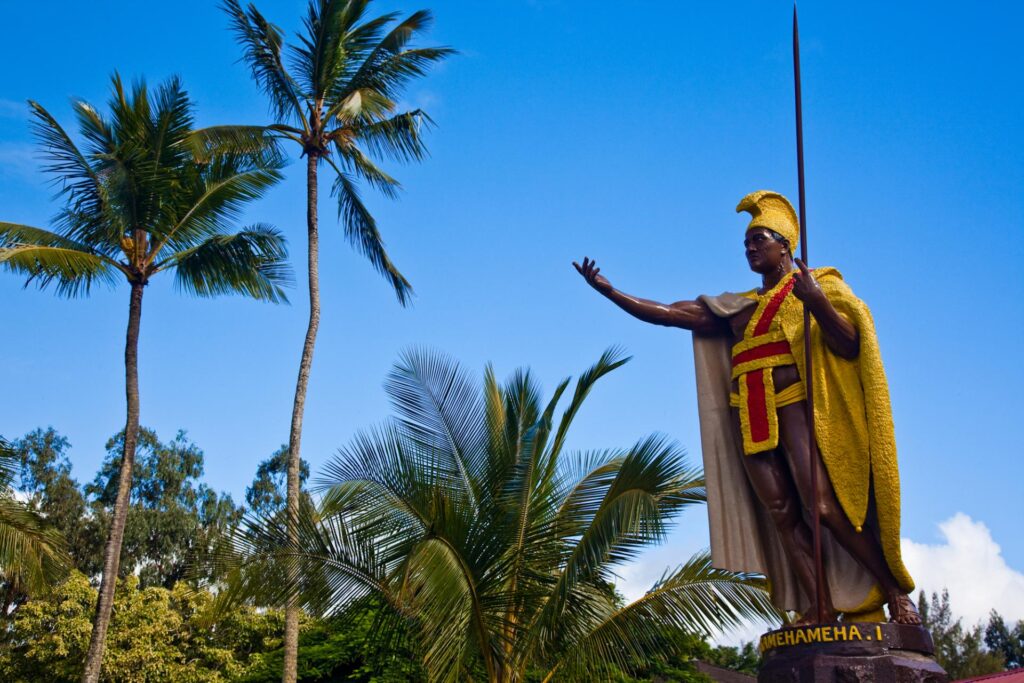
A great warrior, diplomat and leader, King Kamehameha I united the Hawaiian Islands into one royal kingdom in 1810, after years of conflict. His name, Kamehameha, means the lonely one, a reference to his being raised in his early years in secrecy, hidden away in a valley away from others due to fear of the threat to his life because of the well known prophecy that he was the child to unite the islands.
Papa `Aila
Papa `Aila was very highly respected as a kupuna, already beyond his 70’s, and a teacher among the eldest of our Na Kupuna who gathered at the Makaha Hawaiian Cultural Center across the Cornet Store nestled along side the condominium building there on the beach. Papa `Aila would tell of his experience as a child living in Wahiawa, remembering Queen Lili`uokalani coming to their Lili`uokalani Church and how they would all greet the Queen with gifts, bowing deeply (kulou) in their presentations to her, “just like in the movies” he would say.
Yes, he remembered his Queen.
He recalled the saddest day of his life when in 1959, he heard that Hawaii had become a State of the United States,[vi] and he was told that the Hawaiian nation was now forever dead! He thought all was lost!
But he now had a renewed hope, hearing of our refusal to let the history die, and the call for Hawaiian sovereignty being demanded. He was an early and enthusiastic joiner in the call for Hawaiian sovereignty, himself re-emerging as a proud Hawaiian National. He translated our prayer into the Hawaiian language, “O Akua, return to us our face, give us the strength to rip this US mask from our flesh, give us the strength to reclaim what is ours, our sovereignty, let us be Hawaiians in our own homeland. Amene”
The light in Papa Aila’s eyes carried his memory of our Hawaiian nation.
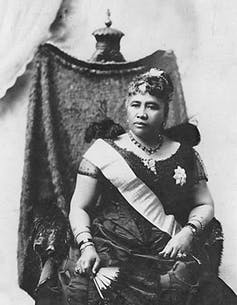
Lili’uokalani, the latest Monarch of Hawaii, was deposed by US marines on 17 Jan 1893 and died on 11 Nov 1917 under ‘house arrest’ at the Royal Iolani Palace in Honolulu. She was 79 years old.
Arthur Cathcart, lived on School Street above the freeway before the Liliha Street Intersection. He was suffering great breathing difficulty, but he still made every effort to catch the bus or some other transportation to join the meeting of kupunas at Makaha[vii]. He too remembered Lili`uokalani, and the carriage she would ride, driven by a man in a suit with his white sleeves puffed at his wrist, as he guided the horse, along School Street. As the carriage passed along that street, you could hear from the houses, the voices of the Hawaiian people chanting their greetings to Queen Lili`uokalani. She would have the driver stop so she could hear the Oli[viii] from the homes, and when completed, she would return the greeting with her own Oli before the carriage would move on. By telling his story, Mr. Cathcart retained and passed on his Hawaiian National consciousness to me and to you.
Ned Burgess was born and for his early years, raised in the Hualalai mountainside above Kailua, Kona. After his great great grandmother, Pōkā Laenui[ix] died, the family moved to Honolulu and lived on Auld Lane, named after a Scottish ancestor to Hawaii. One of the places he played was at the Bishop Museum, sliding down the bannisters, where at times he had seen Queen Lili`uokalani visiting there. Mr. Burgess carried his Hawaiian nationalism in the music he played and enjoyed, in joining with other “old time Hawaiians” in speaking the language in a discussion of things of old Hawaii and sharing stories he had accumulated over his years. He recovered his Hawaiian national consciousness in the late 1980s following retirement as he gathered with other folks and re-engaging in discussions, marches and demonstrations reinvigorated his identity as a Hawaiian.
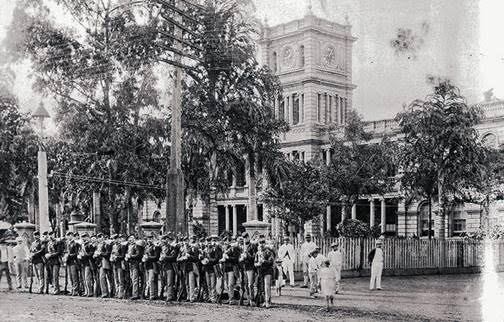
U.S. troops from USS Boston across the street from ‘Iolani Palace 17 Jan 1893 date of the US coup d’état.
A.K. Chong (Sam Cheong) – born and raised in Kipahulu, Maui, graduate of Lahainaluna school. His racial ethnicity was Pake, (Chinese). His national identity was Hawaiian. He spoke both the Hawaiian and the Chinese languages fluently. He also spoke English. Even at age 80, he would catch the country bus line from his home in China town out to Makaha to join the other kupuna at the cultural learning center meetings. At times, I would see him at Mauna`ala [x]or at Iolani Palace[xi] at various ceremonial activities. In one occurrence, I asked him, “A.K. Chong, what are you doing here?” He turned to me and in a very dignified manner, said, “I have come to pay my respects to my Kings and my Queens.” He was proud of his Hawaiian nationality and meant to show that pride whenever and wherever he could, especially when he came across Hawaiian language speakers and he could engage them in the native language.
There were so many more kupuna who carried this memory and abiding love for the Hawaiian nation, whose stories I wish we had the time to recall, and to hear of your stories but perhaps for another day and time. Here, I only mention the names of some of the folks I would have loved to tell you about. Perhaps you remember them too. Or of others from your community.
- Kalāhiki`ola Nali`i Elua, of Wai`anae, counselor in Hawaiian practices and teacher of the kupuna gathering in Makaha
- Nalu Simiona originally of Kona, Hawaii, last of Lualualei Valley, first Hawaiian court translator and nurse, practitioner extraordinaire in the healing arts
- Ephram Makua originally of Maui but moved to Ma`ili and counseled us in Hawaiian thoughts
- Danny Hanakahi, a son of Nanakuli, who gave guidance to ancient Hawaiian practices
- Chris Soares –on Halona Road, Lualualei who recalled vividly Ke Ali`I Kuhio, the master mind of the Hawaiian Homes program
- Walter Paulo, originally of Miloli`i, and who spent many summers at the `Opelu project in Wai`anae, teaching the arts of fishing
- Kau`i Lew of the Ewaliko Family from Waikiki
- Tommy Maunupau who was quick to remind us that the U.S. government acts as a thief in judgment of itself
The Hawaiian national conscious is not limited to the elders of Hawaii but is continued in the lives of the many activists, practitioners, teachers, artists, story-tellers, poets, songsters, farmers, fisherfolks and others of all ages and occupations today. Many of us have grown into adults, taking in that experience and information about our Hawaii and have undertaken that mantle of Hawaiian Nationalism. Some of us like Kaukaohu Wahilani, or my wife Puanani and myself have been brought before the US courts for violating one or another of the colonizer’s law, and have enlightened the court of our Hawaiian history and our continued Hawaiian nationalism. Many of our people have refused to finance this colonization by refusing to contribute to the US taxing authority. Some of us have taken our pleas before the United Nations and other international venues.
Our children, having learned from na kupuna (elders) or their parents, aunts or uncles, or the songs sung at ceremonies, have become Hawaiian Nationals and express their continuity of the nation by refusing to stand for the “obligatory” raising of the US flag or at the playing of the US national anthem, or reciting the US pledge of allegiance. Today, this awareness among our youths is becoming more pervasive such that classes and schools forego those ceremonies and others have simply removed those symbols of US colonization from their classes or campus. Today, we are now undergoing a vibrant debate over removing the statue of US President McKinley who took a central role in the taking of Hawaii, on the campus of one of the oldest and most central schools in Honolulu.
We are in the upswing of our Hawaiian National consciousness. We are strengthened by those lights in our na kupuna eyes, in the passing to us their shared memories and love of their nation in stories, songs, and works, in the honoring and keeping of our language, kanawai, (traditional Hawaiian laws) and the preservation of our `aina (land) and kai (seas), and the sounds of our `oli, and the movement of hula. We are carried forward by na `opio (the youths) and na kamali`i (the children) as we move into our future, with a strong consciousness of our past. A nation never dies unless its national consciousness dies. E ho`omau ka ea o ka `aina. Maintain the life of the nation.
Aloha a hui hou.
NOTES:
[i] Hokule`a A navigable star over Hawaii; the name of a seafaring double-hulled canoe built and sailed crisscrossing the Pacific Ocean with the use of traditional Hawaiian/Pacific knowledge, the events raising great pride in Hawaii and across the Pacific islands.
[ii] Ka Lā ho`iho`i EA “The day the sovereignty was returned”, an event in 1843 after several months following the forceful taking of Hawaii’s government control by Britain’s Lord Paulet and the restoration of the government by Admiral Thomas, an event celebrated throughout Hawaii until 50 years later, the U.S. conducted a sneak attack against Hawaii and participated in the takeover of the Hawaiian nation, and has maintained its colonial hold over Hawaii.
[iii]King Kauikeaouli Son of Kamehameha I who founded the modern Hawaiian nation. His name means seeing the spirit of the child sitting on the clouds, said of the King who supposedly did at birth but was revived by Hawaiian traditional healers.
[iv] Pulawa Defendant Wilford (Nappy) Kala`auala Pulawa reputed to be the Underworld leader of Hawai`i in the 1960s and 1970s, successfully organizing the Polynesian “muscle” with his Samoan counterpart, Alema Leota, bringing the Federal Strike Force into Hawai`i to eliminate him. An initial tax charge successfully imprisoned him, but subsequent criminal charges for double murder and kidnap failed to return guilty verdicts. In this second trial, he challenged the jurisdiction of the U.S. courts and raised the public consciousness of the U.S. aggression and takeover of Hawai`i contrary to international law. Today, he lives peacefully in Maui.
[v] Makua A popular beach and valley at the West side of O`ahu island. The beach had been inhabited by many of Hawaii’s homeless who were literally blown off the beach by Hurricane Iwa. When attempting to return to their residents, the people were met with police dogs, bulldozers, and the State police (DLNR), arresting them for trespass and interfering with government operations, i.e. their eviction. During their trial, they too raised their challenge to the US jurisdiction of the courts.
[vi] “1959, he heard that Hawaii had become a State of the United States” The U.S. took a vote in Hawai`i to resolve the question of Hawaiian self-determination. The choices which should be given to the people under rules of de-colonization should be 3, Independence, Free Association, or continued colonization. The question put to the people was, “Shall Hawaii be immediately admitted into union with the United States.” According to US count, the vote was overwhelmingly in favor of US Statehood. The U.S. reported its result to the United Nations under Article 11 of the U.N. Charter, and the U.N. General Assembly approved a resolution removing Hawaii from the list of places to be decolonized. Since 1959, new voices have been heard, pointing out that the 3 choices were not given, and the wrong people participated in that plebiscite (US citizens including the U.S. military). The plebiscite and the report to the U.N. was a failure of the U.S. and the U.N. General Assembly to meet its “sacred trust obligation” to the people of Hawaii. This formed the continuing quest for self-determination.
[vii] Makaha – An area along the West side of O`ahu, part of the Wai`anae coastline communities.
[viii] Oli A traditional chant.
[ix] Pōkā Laenui – This writer has assumed the name of his great great great grandmother, the woman who raised his father till about the age of 10 when she passed. He assumed her name through advice of Pilahi Paki, a woman specially gifted in Hawaiian traditions with a specialty in the power of language. His father consented.
[x] Mauna`ala is the Hawaii Royal Mausoleum, the site where most of the Hawaiian Royalties are entombed.
[xi] Iolani Palace – This is the site of the latest Capitol of the Hawaiian nation in Honolulu, Hawai`i.
_________________________________________
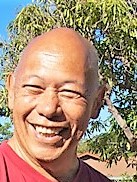 Hayden F. Burgess has assumed the name of his great great great grandmother, Pōkā Laenui, the woman who raised his father till about the age of 10, when she passed. His father consented. Pōkā is an attorney, founding member of the TRANSCEND Network, and lives in Hawai’i. He is Director of the Institute for the Advancement of Hawaiian Affairs and is regarded as the father of the modern Hawaiian Sovereignty movement having brought the issue in the Hawaii and Federal Courts since 1977 and taken that case to the UN via the Indigenous People’s hearing. He was the primary spokesperson for the World Council of Indigenous Peoples and the Pacific Asia Council of Indigenous Peoples from 1984 to 1992. He was noted as one of five pioneers of the development of Indigenous People’s Rights at the UN General Assembly. He is the latest chairperson of the Native Hawaiian Convention, an elected body of native Hawaiians to develop models of Hawaiian sovereignty to propose to the native Hawaiian constituents. This convention has been de-funded by the State of Hawaii and its domestic entity, the Office of Hawaiian Affairs, while the convention was considering a proposal for a model of independence from the USA. He has been associated with Professor Emeritus Johan Galtung as a co-instructor at the University of Hawaii and has conducted extensive interviews with him on public radio, commercial radio and community television. He continues to practice law in Hawaii, has been recently recognized as 100 best lawyers in the U.S., and regularly listed in Marquis’ Who’s Who in American Law. His email is plaenui@hawaiianperspectives.org and website at www.hawaiianperspectives.org which contains most of his writings.
Hayden F. Burgess has assumed the name of his great great great grandmother, Pōkā Laenui, the woman who raised his father till about the age of 10, when she passed. His father consented. Pōkā is an attorney, founding member of the TRANSCEND Network, and lives in Hawai’i. He is Director of the Institute for the Advancement of Hawaiian Affairs and is regarded as the father of the modern Hawaiian Sovereignty movement having brought the issue in the Hawaii and Federal Courts since 1977 and taken that case to the UN via the Indigenous People’s hearing. He was the primary spokesperson for the World Council of Indigenous Peoples and the Pacific Asia Council of Indigenous Peoples from 1984 to 1992. He was noted as one of five pioneers of the development of Indigenous People’s Rights at the UN General Assembly. He is the latest chairperson of the Native Hawaiian Convention, an elected body of native Hawaiians to develop models of Hawaiian sovereignty to propose to the native Hawaiian constituents. This convention has been de-funded by the State of Hawaii and its domestic entity, the Office of Hawaiian Affairs, while the convention was considering a proposal for a model of independence from the USA. He has been associated with Professor Emeritus Johan Galtung as a co-instructor at the University of Hawaii and has conducted extensive interviews with him on public radio, commercial radio and community television. He continues to practice law in Hawaii, has been recently recognized as 100 best lawyers in the U.S., and regularly listed in Marquis’ Who’s Who in American Law. His email is plaenui@hawaiianperspectives.org and website at www.hawaiianperspectives.org which contains most of his writings.
Tags: Anglo America, Asian Pacific History, Colonialism, Colonization, Consciousness, Deep Culture, Hawaii, Hawaiian Culture, Hawaiian Religion, Hawaiian Sovereignty, History, Indigenous Culture, Native cultures, Pacific Islands, Pentagon, Polynesian Culture, US Military, USA
This article originally appeared on Transcend Media Service (TMS) on 21 Aug 2023.
Anticopyright: Editorials and articles originated on TMS may be freely reprinted, disseminated, translated and used as background material, provided an acknowledgement and link to the source, TMS: Continuity of the Hawai’ian National Consciousness, is included. Thank you.
If you enjoyed this article, please donate to TMS to join the growing list of TMS Supporters.

This work is licensed under a CC BY-NC 4.0 License.
